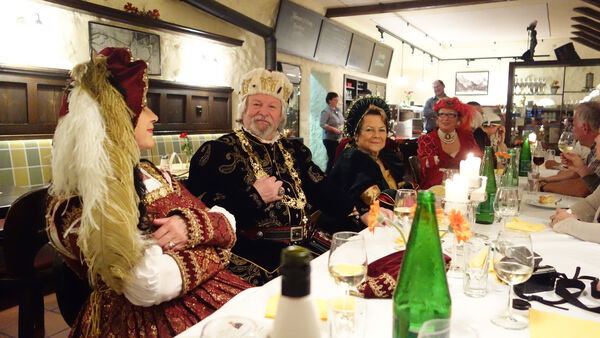Packing Tips: Clothes
By Rick Steves
The bulk of your luggage is filled with clothing. Minimize by bringing less. Experienced travelers bring only things that will be worn repeatedly, complement other items, and have multiple uses (for example, I don't swim much, so I let a pair of lightweight shorts double as swim trunks). Pack with color coordination in mind. Neutral colors (black, navy, khaki) dress up easily and can be extremely versatile. No one knows you're wearing the same outfit every third day…except your travel partner, and they're doing the same thing.
To extend your wardrobe, plan to spend 10 minutes doing a little wash every few nights, or consider a visit to a local launderette, which is in itself a Back Door experience. Choose fabrics that resist wrinkling or look good wrinkled. If you wring with gusto, lightweight clothing should dry overnight in your hotel room. Do a test wash before your trip and pick items that hand-wash well.
Many travelers are concerned about appropriate dress. During tourist season, even Europe's concert halls go casual. I have never felt out of place at symphonies, operas, or plays wearing a decent pair of slacks and a good-looking sweater or collared shirt. Some cultural events require more formal attire, particularly outside of high season, but the casual tourist rarely encounters these. Women who don't pack a dress or skirt will do just fine with a pair of nice pants.
While Europeans do wear casual clothing, their definition of casual is a bit dressier than ours. Shorts are uncommon on older women and in big cities, and the cutoff temperature for "hot enough for shorts" is much higher than in the US. Especially in southern Europe, women can blend in with the locals by wearing Capri pants or a skirt instead; men can pack a pair of as-light-as-possible pants.
Shorts, tank tops, and other skimpy summer attire can also put a crimp in your sightseeing plans. Some churches, mostly in southern Europe, have modest-dress requirements: no shorts or bare shoulders. Except at the strict St. Peter's Basilica (in Rome) and St. Mark's (in Venice), the dress code is often loosely enforced. Synagogues and mosques may require women to cover their hair. At some heavily touristed churches with strict dress codes, people hand out sheets of tissue paper you can wrap around yourself like a shawl or skirt. If necessary, it's usually easy to improvise some modesty (dash into a store for a lightweight shirt to cover your shoulders or carry a scarf to cover your hair).
It can be worth splurging a little to get just the right clothes for your trip — ideally, things you'll wear at home, too. For durable, lightweight travel clothes, consider ExOfficio, TravelSmith, Tilley, Eddie Bauer, and REI.
But ultimately — as long as you don't wear something outrageous or offensive — just dress in a way that makes you comfortable. No matter how carefully you dress, your clothes will probably distinguish you from Europeans. And so what? To blend in and be culturally sensitive, I watch my manners, not the cut of my clothes.
More Tips for Women
Thanks to our tour guide Joan Robinson for the following tips:
Skirts (knee-length is appropriate for churches) are as cool and breathable as shorts, but dressier, and have a key advantage over dresses: They can be worn with a money belt. A lightweight skirt made with a blended fabric packs compactly. Make sure it has a comfy waistband. Skirts can easily be mixed and matched, and can be dressed up with flats or boots.
Silk, microfiber, or stretch lace underwear dries faster than cotton, but breathes more than nylon. A sports bra can double as a hiking/sunning top. You don't need a bikini to sunbathe topless on European beaches — local women with one-piece bathing suits just roll down the top.
Accessorize: Scarves give your limited wardrobe just the color it needs. They dress up your outfit, are lightweight and easy to pack, and if purchased in Europe, make a great souvenir. Some women bring a shawl-size scarf or pashmina to function as a sweater substitute, head wrap, skirt at a church, or even a blanket on a train. Functional, cheap, but beautiful imitation pashminas can be found all over Europe. Leave valuable or flashy jewelry at home. Bring a few pieces you can live with losing, or buy some interesting artisan jewelry in Europe.


